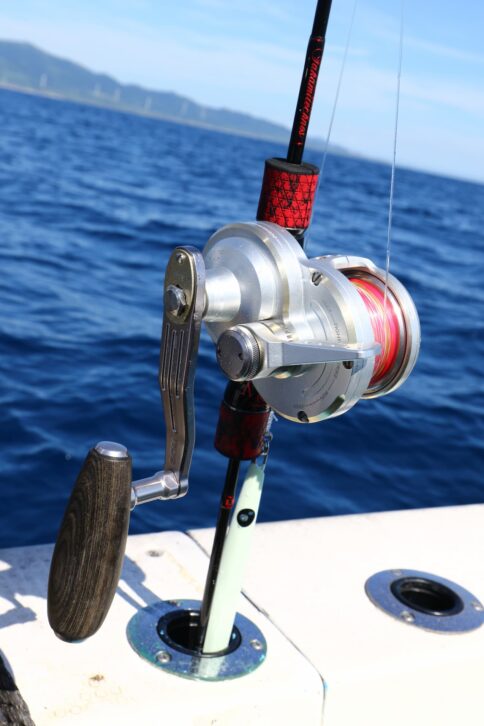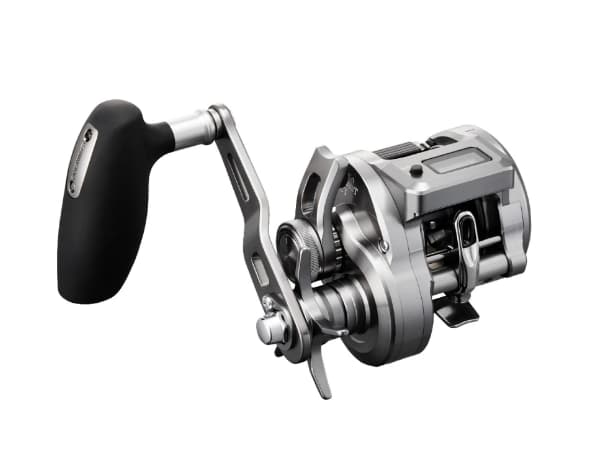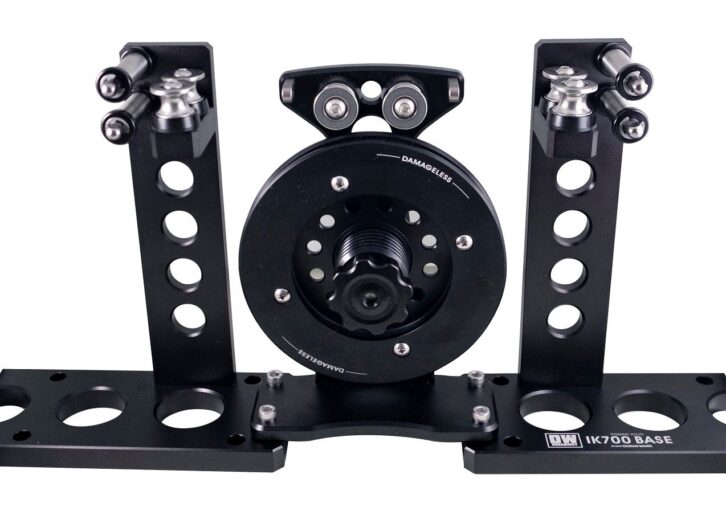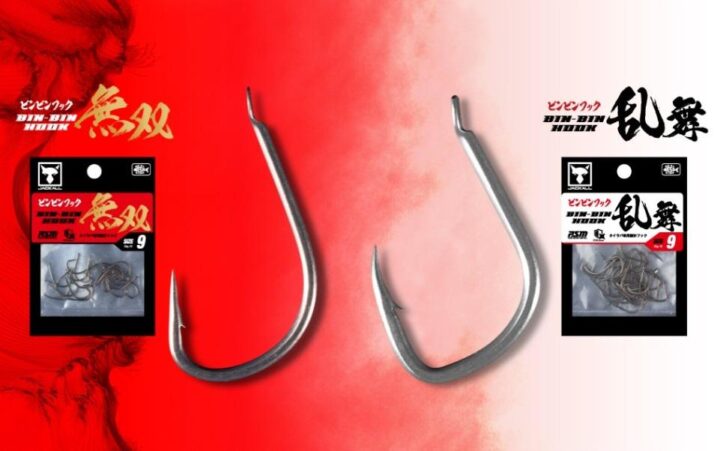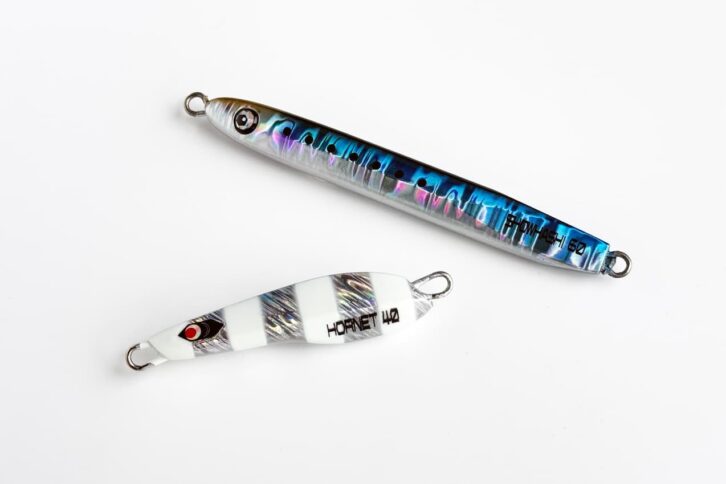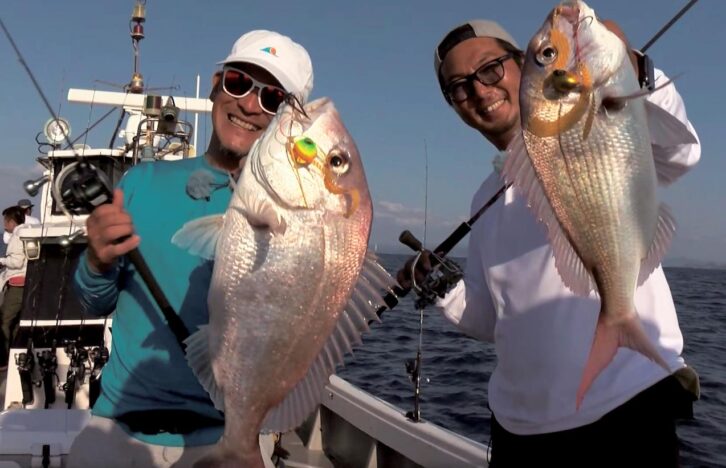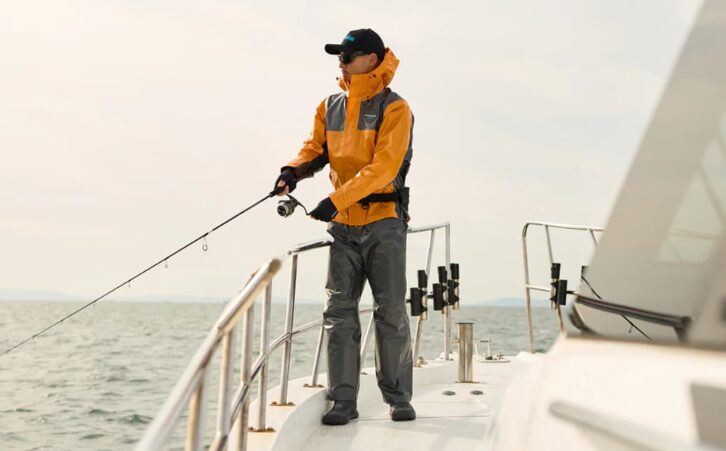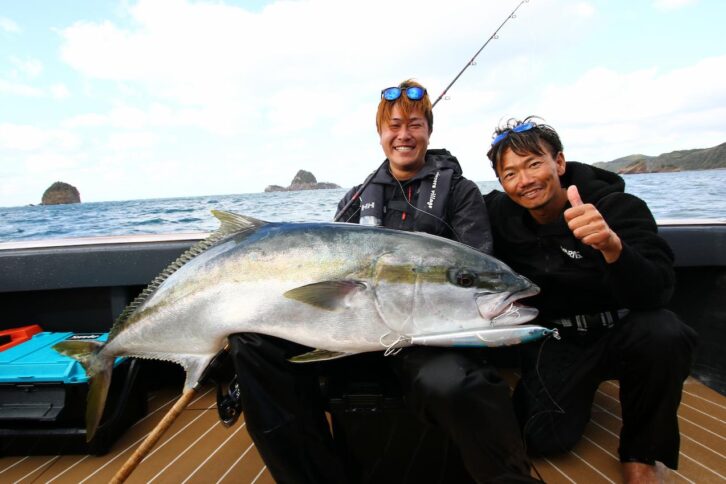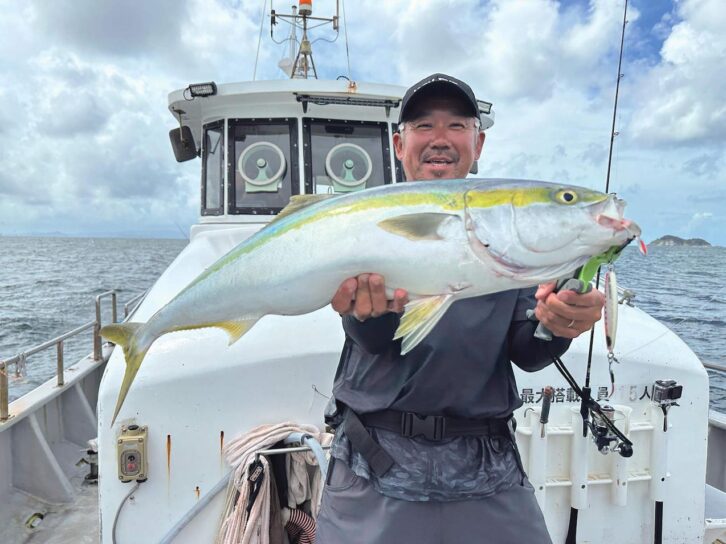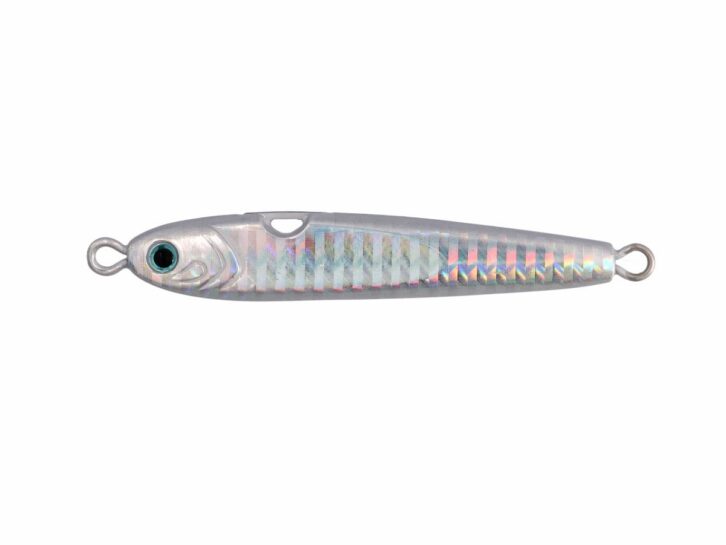Now a common method for Spanish mackerel deep in the bay of Tokyo Bay!
Shout! Makoto Ono will fascinate you! Explanation! Blade jigging attacked by blade shotel!
Blade jigging was born off the coast of Iwakuni in the Seto Inland Sea and has now spread nationwide. This method was born to catch Spanish mackerel, but it seems to be gaining momentum in Tokyo Bay compared to other areas outside of the Iwakuni-oki area. This article explains the reasons for this, as well as the basics and arrangements for exploring with blade jigging. Shout! Fisherman's Tool's Makoto Ono's actual fishing.

INDEX
Both passenger boats and charter boats can do it!
Blade jigging has been attracting nationwide attention since the year before last and has become well known as a method for catching Spanish mackerel. The blade jigging method was originally developed in Iwakuni in the Seto Inland Sea, based on my experience that Spanish mackerel often hit when the jig was picked up while jigging for bluefish, and that the fast winding of the jig was effective. As a result, local anglers and recreational fishermen began to pursue this method, and as a result, it was realized that Spanish mackerel could be selected and caught by attaching a blade and a single hook to the back of the jig and winding it fast while avoiding hits from small bluefish such as yellowfin tuna and yellowtail. Since Spanish mackerel is a popular fish because of its good eating quality, the fact that it can be selected and caught with high probability spread throughout the country.
Earlier, a reporter who was working with Shout Makoto Ono on a different target had heard about Iwakuni. He also told me that Shout was developing a jig. Mr. Ono, armed with the completed blade jig, the Blade Shortel, has been producing results in the Kanto region and elsewhere.
Incidentally, the game of mainly catching Spanish mackerel was already well established in Tokyo Bay and Sagami Bay in Kanagawa Prefecture. That is, plug casting and jigging at the mouth of the bay. As Spanish mackerel increased nationwide, they began migrating to the aforementioned areas and became a seasonally limited catch. Because of this, as soon as information about blade jigging reached the Kanto region, some pleasure boats began to adopt this fishing method. One of them was the fishing boat Fukagawa Yoshinoya, which we visited this time. On small boats, such as charter boats, it is easy to cast and shoot at the nabura because the charter boat is basically for several people, but on large boats, it is difficult to make long casts depending on the fishing position. However, with blade jigging, it is possible to cast underwater. This is the reason why he was chosen to fish on a large passenger boat. This time, Mr. Ono planned a fishing trip to Fukagawa Yoshinoya in early October, just in time for the opening of the Spanish mackerel season in the inner bay of Tokyo Bay, one of the Kanto area’s Spanish mackerel fields.
The conditions were still in the summer and the water temperature was still high. When I boarded the boat at Fukagawa Yoshinoya a month ago for Tachino-yaki jigging, I asked about the forecast for Spanish mackerel in the back of the bay, and was told, “If there is a typhoon or other storm, the sea water will be stirred up and they will enter the back of the bay with bait. This was the story. Later, a typhoon came, but the sea was not so rough, and it was not like “It came in all at once! But before the day of this interview, I had heard that Sawasawa was coming into the bay with Bayt. However, a few Spanish mackerel had entered the inner part of the bay before the day of this interview and were beginning to be caught. The number of sardines as bait seemed to be small, and the fishing was about 50-50. The fishing was about 50-50. You never know until you go out on the boat.
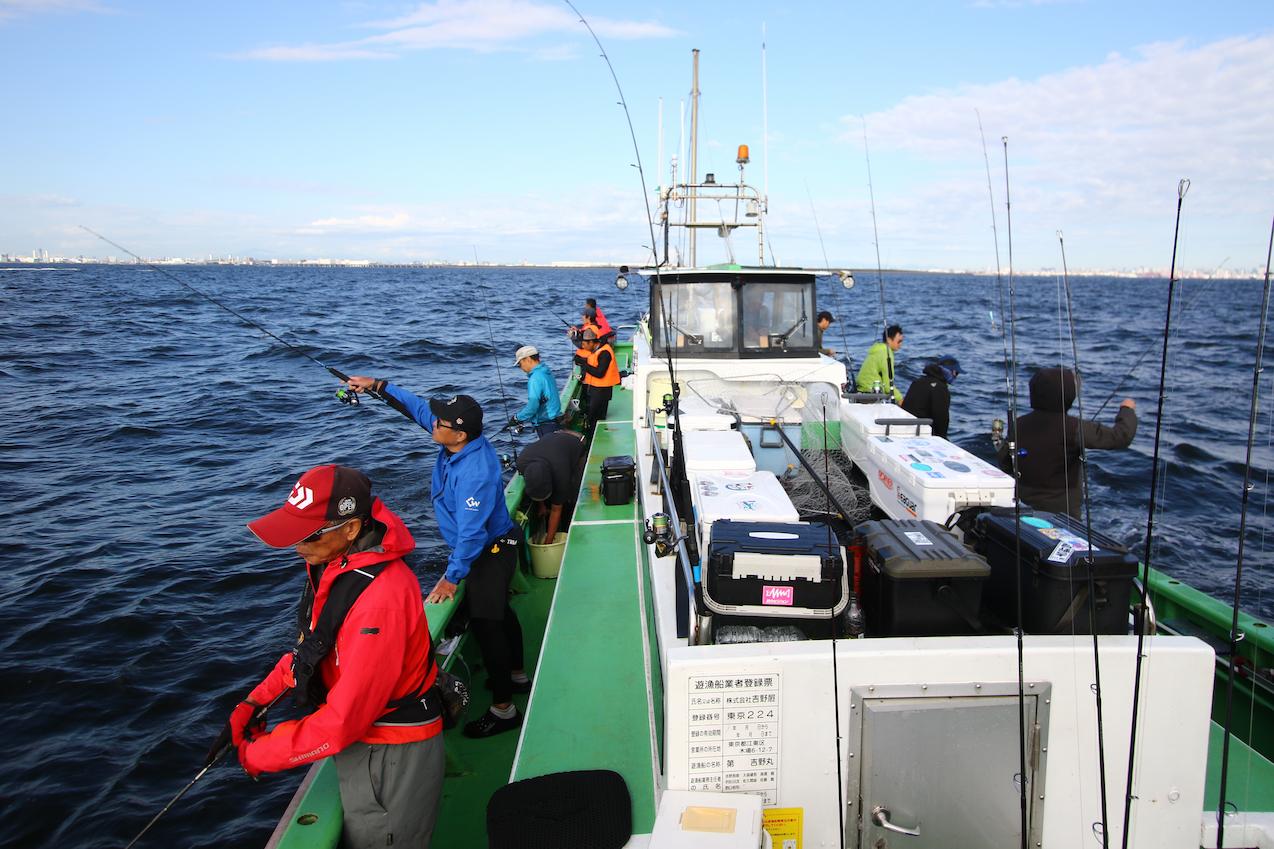
Both passenger boat style and small boat charter style are available for Spanish mackerel fishing in the inner bay of Tokyo Bay. The shared boat style can be easily enjoyed by a single angler or a small group of anglers. However, when casting, you need to under-cast. However, blade jigging can be caught even with a light cast. The passenger boat Spanish mackerel blade jigging has quickly become popular.

Fishing boat “Fukagawa Yoshinoya” that took care of us. They sail from the inner bay of Tokyo Bay. In addition to Spanish mackerel, they also go out in the fall for hairtail jigging and horse mackerel.
Basics of blade jigging and reeling speed
On the day of the interview, the boat leaves at 7:00 a.m., but we arrived at the boarding area a little after 4:00 p.m. We were also filming for a YouTube program called “Shout, Style! Style” on YouTube, we gathered early in order to take a fishing seat at the water’s edge. Incidentally, blade jigging allows anglers to throw a jig and pull it at an angle to probe wider. When fishing on a chartered small boat, it is easy to cast a jig, but on a large boat like the one we boarded this time, there are many passengers on board, and undercasting is the basic method. Casting is relatively easy at the water’s edge and at the top of the boat, but it takes a certain amount of technique to cast a jig a long distance between the body of the boat. However, it is possible to catch fish by simply casting lightly. It is best to learn enough technique to be able to throw lightly in front of the eyes with an under cast.
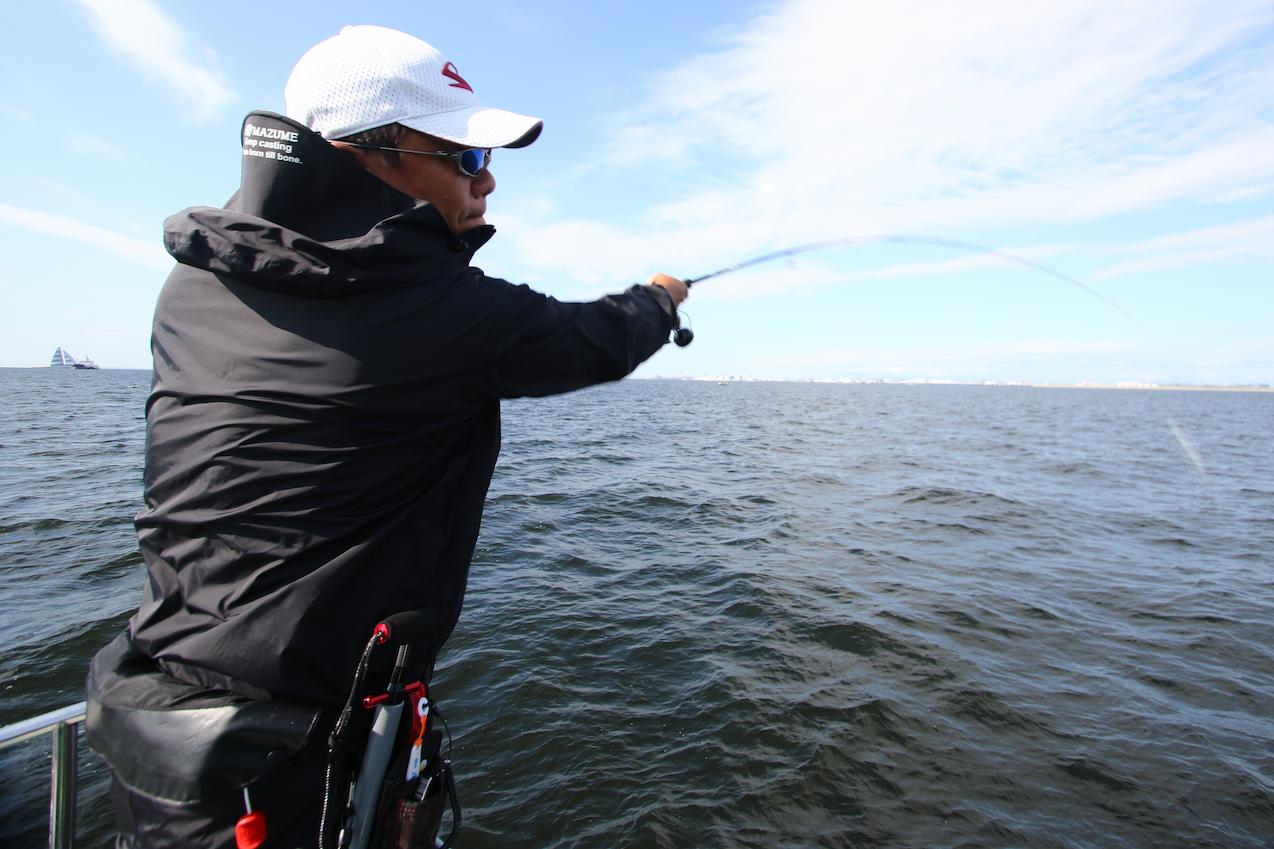
Blade jigging allows you to cast wider and increase your chances. On passenger boats, undercasting is the rule of thumb. It is best to cast far, but learn to cast lightly. When casting, it is best to cast with a light touch rather than a hard one to avoid trouble.
On the day of the fishing, there were 16 anglers on board, even though it was a weekday. All of them were blade jigging customers. This shows how popular it is. The day before, we had a hard time in the first half of the day, but in the second half of the day, we had a string of success at a nearby point. 26 fish were caught by the two boats. With this in mind, we decided to start the day at a nearby point.
The basic method of blade jigging is to sink the jig to the bottom and just reel it in from there. No action, such as jerking or stopping, is used. If you make any extra movements, you increase the probability that a bluefish, if any, will hit the jig. Also, Spanish mackerel swim in a straight line to the jig and attack it, which can lead to a line break.
Regarding the speed of reeling, in Iwakuni, where the technique originated, it is said that the basic method is to reel the jig at high speed so that it can be retrieved in a hurry in order to avoid being hit by yellowtail and yellowtail, but depending on the conditions, fishing results can be obtained even without reeling that fast. Especially when there are no yellowfin tuna or yellowtail (or inada in Kanto) mixed in with Spanish mackerel, the basic rule is to reel fast, but hits can be obtained even without reeling that fast. On the other hand, it is important to explore while experimenting with different speeds to find out which is best.

The basic principle of blade jigging is to entice the angler by simply reeling without any action. If you add unnecessary movement, bluefish, such as sea bream, will often strike. The reeling speed is fast, but we will explore what speed is best for that particular day and time.
How to choose a jig
The depth of the water was 20-25 m. Mr. Ono started with a 50 g blade shotel. Looking at the surface of the water, he could see a school of sardines about 4 cm in length. The size was just right for blade jigging.
When selecting a jig, it is important to first select a weight that will take the bottom well,” Ono said. Also, match the size of the bait. The other is to match the length and volume of the bait that is being preyed upon. It is difficult to decide which is more important. But if you can’t get to the bottom with a jig that matches the bait, it will be harder to probe more widely. This is also affected by the speed at which the boat is swept by the wind. On the other hand, if the bait is too larger than the bait size, it seems to reduce the number of bites. In my case, the first priority is the bait size, and if I can’t get bottom with it, I increase the size by one. Then I concentrate on getting to the bottom.
In addition, it is important not to get into trouble with other anglers around you. If your jig is drifting at an angle after you cast it, you may end up cross-lining with the angler next to you. You should always pay attention to the line angles of the anglers around you. Furthermore, on windy days, he would sum or lower his rod to avoid disturbing others with line dandruff when landing the jig after casting.
Regarding color selection, he said, “First of all, colors that stand out in the tide color of the area. As for colors, select the colors that are being caught,” Ono told us.
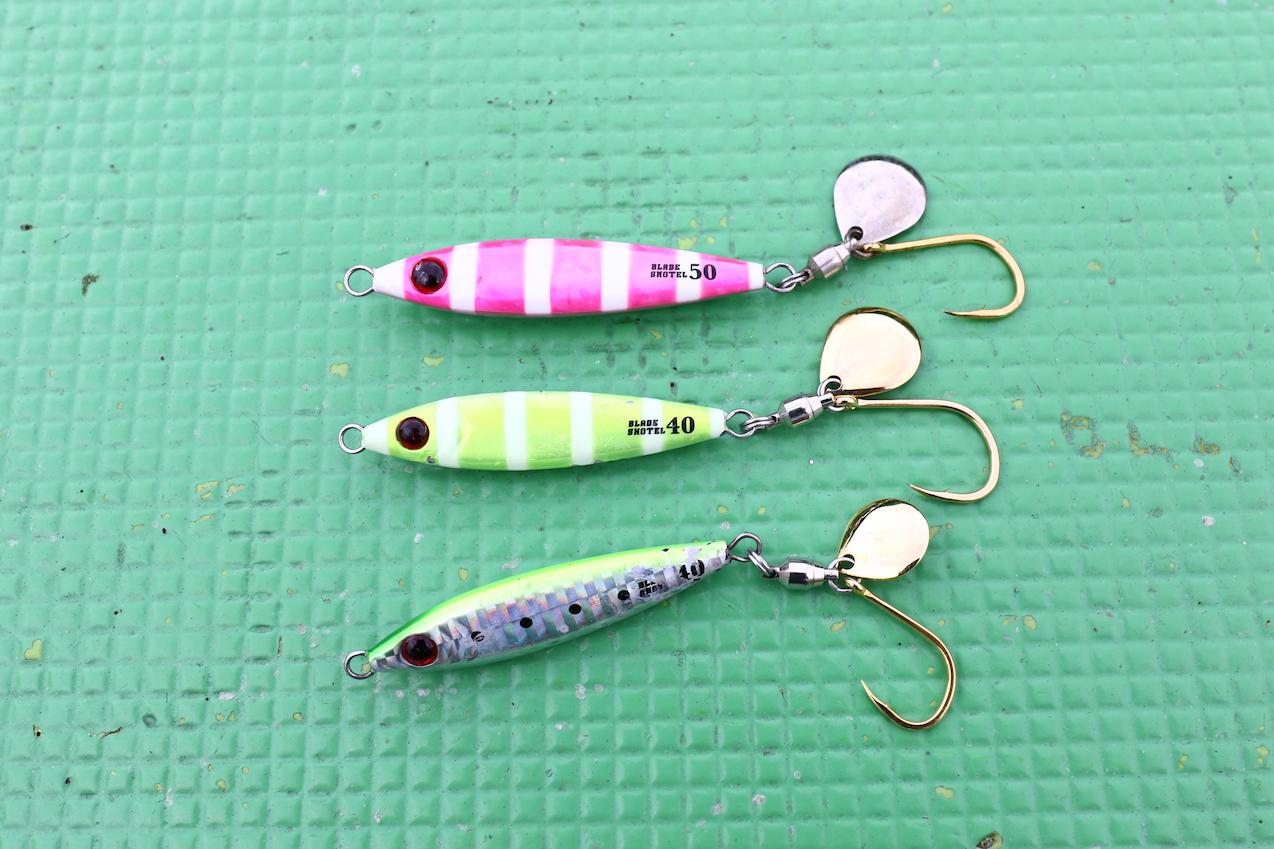
Mr. Ono’s main bait is a braid shotel that he developed himself. In Tokyo Bay, 40g and 50g are the main weights, but anglers should also prepare weights around these weights.
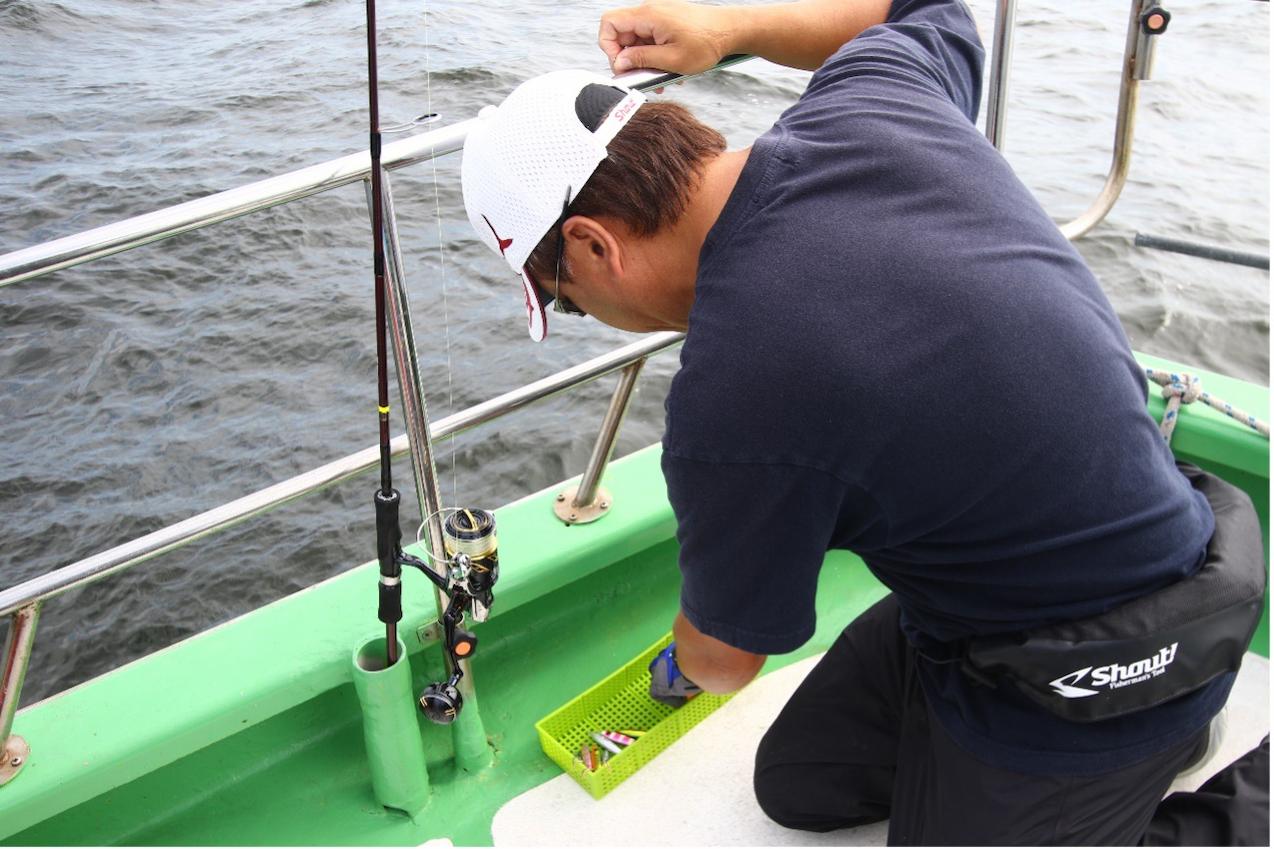
Choose colors and weights according to the situation and explore. The shortest way to get a hit is to match the color that stands out in a muddy tide or the color that is catching fish.
Points to keep in mind when reeling in a blade jig
Blade jigging is an easy method for beginners to get into because all you have to do is reel the jig in without any action.
I often tell anglers to keep the rod steady while reeling. If you reel too fast, the rod tip will shake and the jig will move a little. When you do this, you are likely to get more hits from bluefish. Also, stable reeling causes the vibration of the blade to be transmitted to your hand. It also helps anglers to know where the tide is in the water and where the fish are likely to be. And you can tell when fish are chasing the jig and when fish are entangled in it. It is more interesting when this happens. However, it is possible for a beginner on a boat to get a series of hits while reeling in a shaky jig! What a surprise. …… (laughs)”
There are also arrangements to be made when reeling in.
I’ve been thinking recently that it might be a good idea to change the speed of reeling in the middle of the reeling process,” he said. “I’ve been thinking recently that it might be a good idea to make changes in speed in the middle of the reeling. The reeling is a straight line, but I would like to add a little bit of speed change in the middle of the reeling. I feel that this is one way to lure fish. It is a technique I would like to try.

He says that if you concentrate too much on reeling fast, the rod tip will flap and shake, and the jig will also flap and shake, which will increase the number of bluefish hits. Ono says it is better to wind the rod in a way that keeps the rod in a constant motion.
The development of fishing with a steady stream of bluefish
Now, on the day of this report, I heard that the first half of the previous day had been completely unsuccessful. The first half of the previous day had been completely unsuccessful, but early in the day, the boat’s anglers got a hit. The angler who caught the fish was a regular at Fukagawa Yoshinoya. The jig was a 40g blade shotel, 80 cm in length. After that, as the boat continued to drift along the tide line, there were occasional hits all over the boat, and cries of “I got cut off” echoed through the boat. In the midst of all this, a customer on the starboard side of the boat had a series of hits. He checked the speed of the reeling and the silhouette of the jig. At this point, Mr. Ono decided it would be better to use a slightly smaller jig, and changed from a 50g blade shortel to a 40g. After that, he continued to cast and reel without resting. In this blade jigging, it is important to keep searching anyway. His experience has taught him that Spanish mackerel will bite regardless of the tide. In the early afternoon, Mr. Ono successfully caught a Spanish mackerel.
I started reeling it in from the bottom and it hit right away,” he said.
He did not know whether the Spanish mackerel was on the bottom or was slightly floating and chasing the jig as it was falling, but he was able to make the hit. He believed in the hit and kept reeling in the fish.
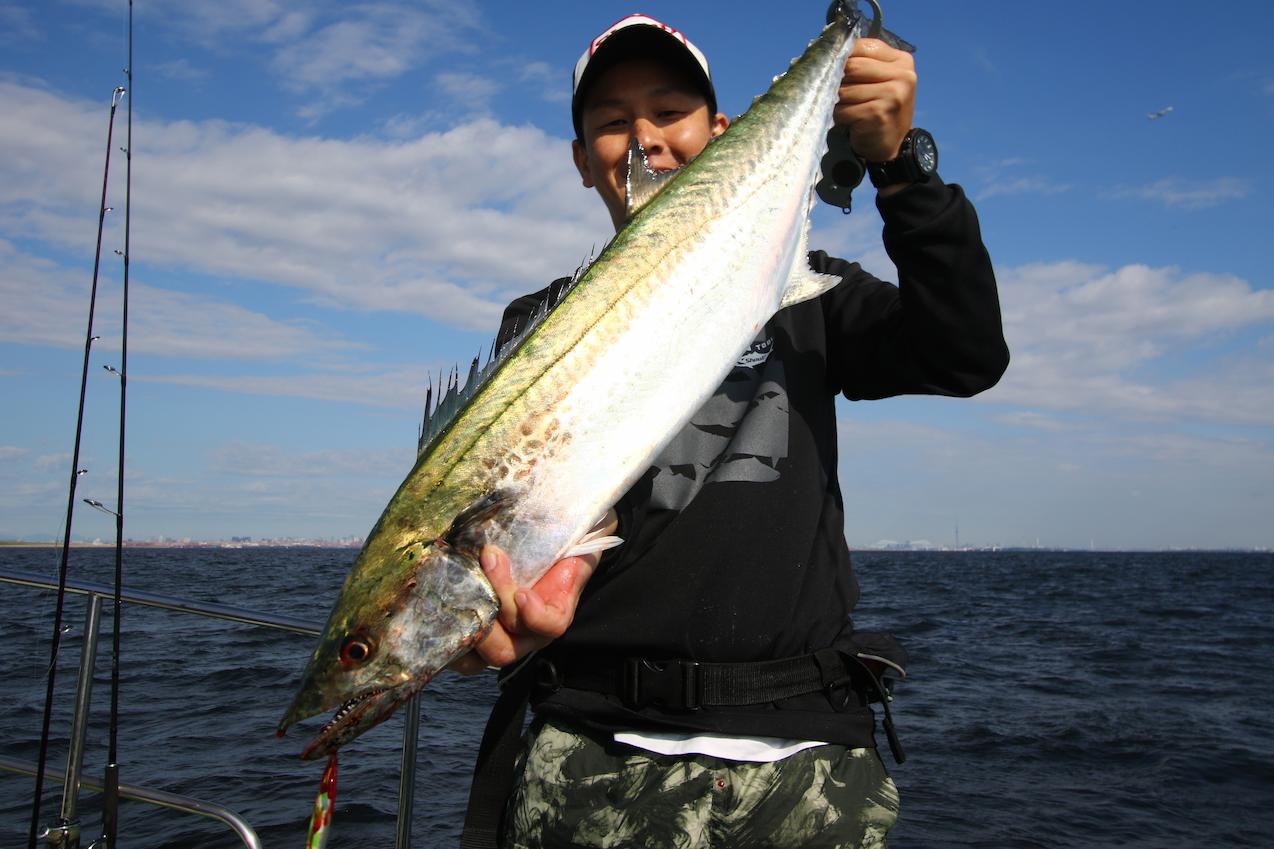
A regular angler who was fishing next to Mr. Ono got a hit! He got the bite about an hour after we started fishing. Well done!

He had several bites, but could not get on it! It was a hit on a Blade Shotell 40g Chart Zebra Glow Kaymura.
Fight Tips
After the hit, Mr. Ono gradually pulled in Spanish mackerel from the drag set weakly, making drag noises. Spanish mackerel have soft mouths. If he tried too hard, he would lose a piece of meat and hook out. When fighting Spanish mackerel, it is better to reel in the fish without forcing the rod. Do not pump the rod. Also, if you rush to bring the Spanish mackerel to the surface when you begin to see it, it will go wild at that moment and you may hook out. Once you have brought the Spanish mackerel to the surface, it is best to move the rod tip sideways and guide the Spanish mackerel into the net as it slides by.
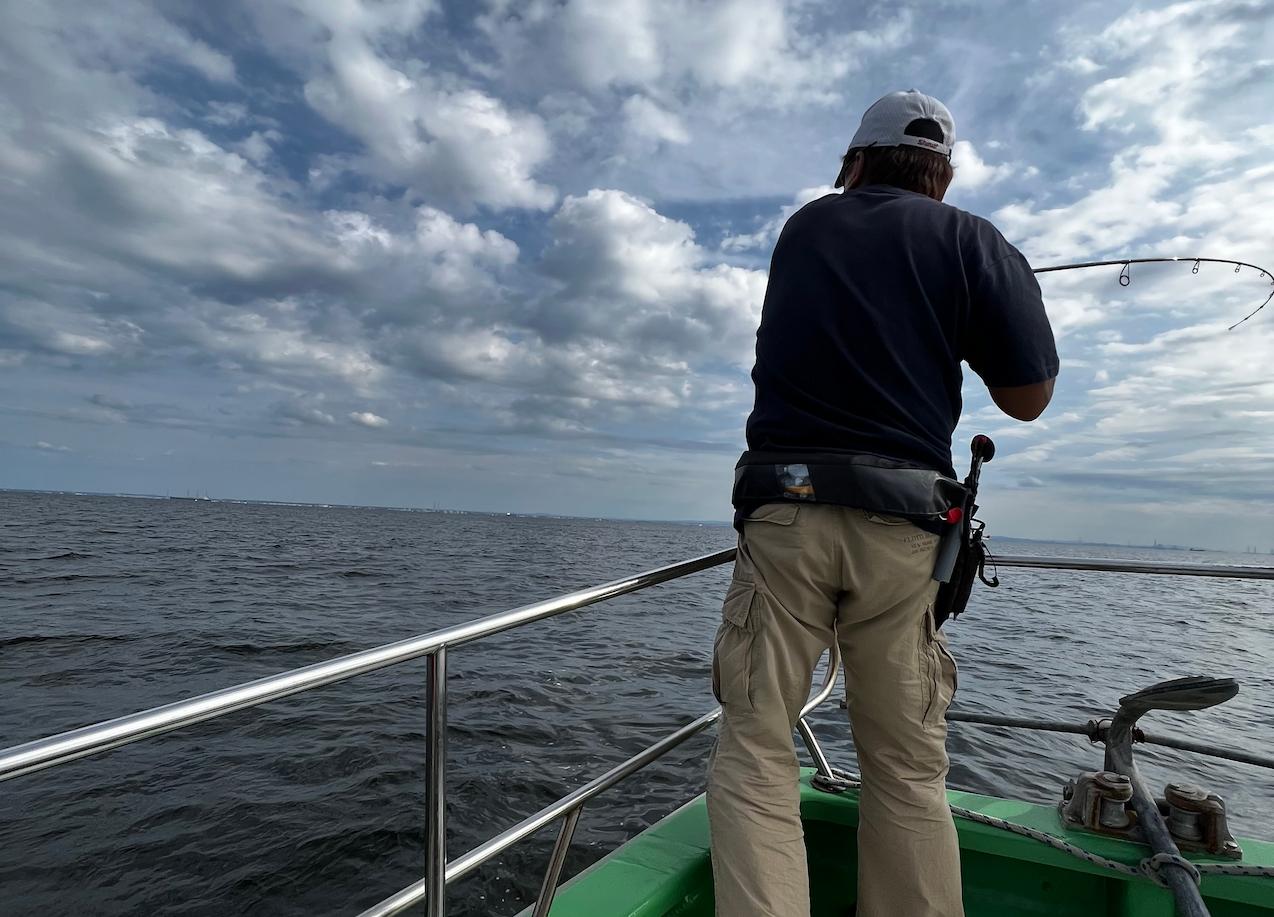
When you get a bite, hook the fish first. Do not use excessive hooking motions, as this may lead to the fish’s mouth breaking open. Then, do not panic and let the drag work while pulling in the fish. The basic rule of thumb is to reel in the fish without pumping, while keeping the rod in a constant throwing position.

When the fish comes near the surface of the water, approach the net man and guide it into the net. At this time, if the fish’s head comes out of the water, it is better to guide the rod so that it slides just below the water’s surface and then put it in the net.
In the end, we only caught 12 fish on the boat that day. However, I think I had three times as many bites as that. I felt like I couldn’t get hooked. It was still early in the season. After that, until the beginning of November, the fishing was uneven, perhaps because the hot days were still continuing this year. However, as fall approaches and the water temperature drops, there is a good chance that the fishing will pick up. We are looking forward to the changes in the future. For details on the tackle used, please refer to the following article.
Video of the actual fishing



